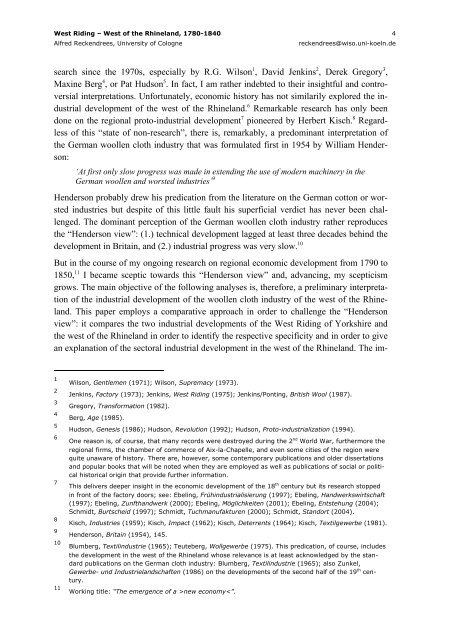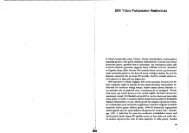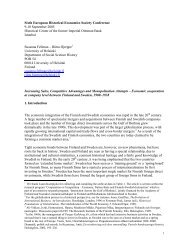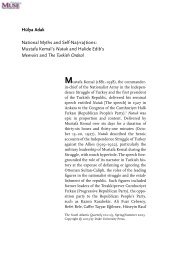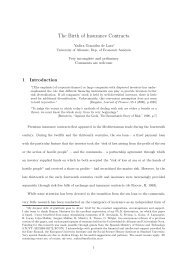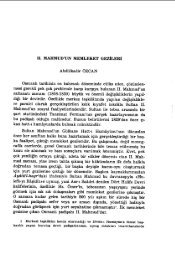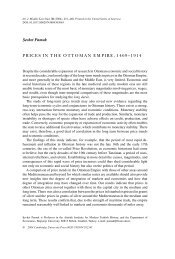West Riding – Western Rhineprovince, 1790-1840: Diverse Paths to ...
West Riding – Western Rhineprovince, 1790-1840: Diverse Paths to ...
West Riding – Western Rhineprovince, 1790-1840: Diverse Paths to ...
You also want an ePaper? Increase the reach of your titles
YUMPU automatically turns print PDFs into web optimized ePapers that Google loves.
<strong>West</strong> <strong>Riding</strong> <strong>–</strong> <strong>West</strong> of the Rhineland, 1780-<strong>1840</strong> 4<br />
Alfred Reckendrees, University of Cologne reckendrees@wiso.uni-koeln.de<br />
search since the 1970s, especially by R.G. Wilson 1 , David Jenkins 2 , Derek Gregory 3 ,<br />
Maxine Berg 4 , or Pat Hudson 5 . In fact, I am rather indebted <strong>to</strong> their insightful and controversial<br />
interpretations. Unfortunately, economic his<strong>to</strong>ry has not similarily explored the industrial<br />
development of the west of the Rhineland. 6 Remarkable research has only been<br />
done on the regional pro<strong>to</strong>-industrial development 7 pioneered by Herbert Kisch. 8 Regardless<br />
of this “state of non-research”, there is, remarkably, a predominant interpretation of<br />
the German woollen cloth industry that was formulated first in 1954 by William Henderson:<br />
‘At first only slow progress was made in extending the use of modern machinery in the<br />
German woollen and worsted industries’ 9<br />
Henderson probably drew his predication from the literature on the German cot<strong>to</strong>n or worsted<br />
industries but despite of this little fault his superficial verdict has never been challenged.<br />
The dominant perception of the German woollen cloth industry rather reproduces<br />
the “Henderson view”: (1.) technical development lagged at least three decades behind the<br />
development in Britain, and (2.) industrial progress was very slow. 10<br />
But in the course of my ongoing research on regional economic development from <strong>1790</strong> <strong>to</strong><br />
1850, 11 I became sceptic <strong>to</strong>wards this “Henderson view” and, advancing, my scepticism<br />
grows. The main objective of the following analyses is, therefore, a preliminary interpretation<br />
of the industrial development of the woollen cloth industry of the west of the Rhineland.<br />
This paper employs a comparative approach in order <strong>to</strong> challenge the “Henderson<br />
view”: it compares the two industrial developments of the <strong>West</strong> <strong>Riding</strong> of Yorkshire and<br />
the west of the Rhineland in order <strong>to</strong> identify the respective specificity and in order <strong>to</strong> give<br />
an explanation of the sec<strong>to</strong>ral industrial development in the west of the Rhineland. The im-<br />
1<br />
Wilson, Gentlemen (1971); Wilson, Supremacy (1973).<br />
2<br />
Jenkins, Fac<strong>to</strong>ry (1973); Jenkins, <strong>West</strong> <strong>Riding</strong> (1975); Jenkins/Ponting, British Wool (1987).<br />
3<br />
Gregory, Transformation (1982).<br />
4<br />
Berg, Age (1985).<br />
5<br />
Hudson, Genesis (1986); Hudson, Revolution (1992); Hudson, Pro<strong>to</strong>-industrialization (1994).<br />
6 nd<br />
One reason is, of course, that many records were destroyed during the 2 World War, furthermore the<br />
regional firms, the chamber of commerce of Aix-la-Chapelle, and even some cities of the region were<br />
quite unaware of his<strong>to</strong>ry. There are, however, some contemporary publications and older dissertations<br />
and popular books that will be noted when they are employed as well as publications of social or political<br />
his<strong>to</strong>rical origin that provide further information.<br />
7 th<br />
This delivers deeper insight in the economic development of the 18 century but its research s<strong>to</strong>pped<br />
in front of the fac<strong>to</strong>ry doors; see: Ebeling, Frühindustrialisierung (1997); Ebeling, Handwerkswirtschaft<br />
(1997); Ebeling, Zunfthandwerk (2000); Ebeling, Möglichkeiten (2001); Ebeling, Entstehung (2004);<br />
Schmidt, Burtscheid (1997); Schmidt, Tuchmanufakturen (2000); Schmidt, Standort (2004).<br />
8<br />
Kisch, Industries (1959); Kisch, Impact (1962); Kisch, Deterrents (1964); Kisch, Textilgewerbe (1981).<br />
9<br />
Henderson, Britain (1954), 145.<br />
10<br />
Blumberg, Textilindustrie (1965); Teuteberg, Wollgewerbe (1975). This predication, of course, includes<br />
the development in the west of the Rhineland whose relevance is at least acknowledged by the standard<br />
publications on the German cloth industry: Blumberg, Textilindustrie (1965); also Zunkel,<br />
Gewerbe- und Industrielandschaften (1986) on the developments of the second half of the 19 th century.<br />
11<br />
Working title: “The emergence of a >new economy


